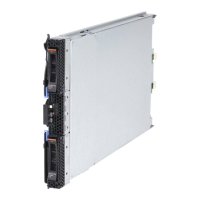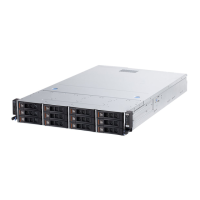Chapter 2. IBM eX5 technology 19
Figure 2-1 Shared front-side bus, in the IBM x360 and x440; with snoop filter in the x365 and x445
The front-side bus carries all reads and writes to the I/O devices, and all reads and writes to
memory. Also, before a processor can use the contents of its own cache, it must know
whether another processor has the same data stored in its cache. This process is described
as
snooping the other processor’s caches, and it puts a lot of traffic on the front-side bus.
To reduce the amount of cache snooping on the front-side bus, the core chip set can include a
snoop filter, which is also referred to as a cache coherency filter. This filter is a table that
keeps track of the starting memory locations of the 64-byte chunks of data that are read into
cache, called
cache lines, or the actual cache line itself, and one of four states: modified,
exclusive, shared, or invalid (MESI).
The next step in the evolution was to divide the load between a pair of front-side buses, as
shown in Figure 2-2. Servers that implemented this design include the IBM System x3850
and x3950 (the
M1 version).
Figure 2-2 Dual independent buses, as in the x366 and x460 (later called the x3850 and x3950)
This approach had the effect of reducing congestion on each front-side bus, when used with a
snoop filter. It was followed by independent processor buses, shown in Figure 2-3 on
page 20. Servers implementing this design included the IBM System x3850 M2 and x3950
M2.
Memory I/O
Processor ProcessorProcessor Processor
Core Chip set
Memory I/O
Processor ProcessorProcessor Processor
Core Chip set

